The Boston campus koi pond is beloved. Now it’s more resilient, too
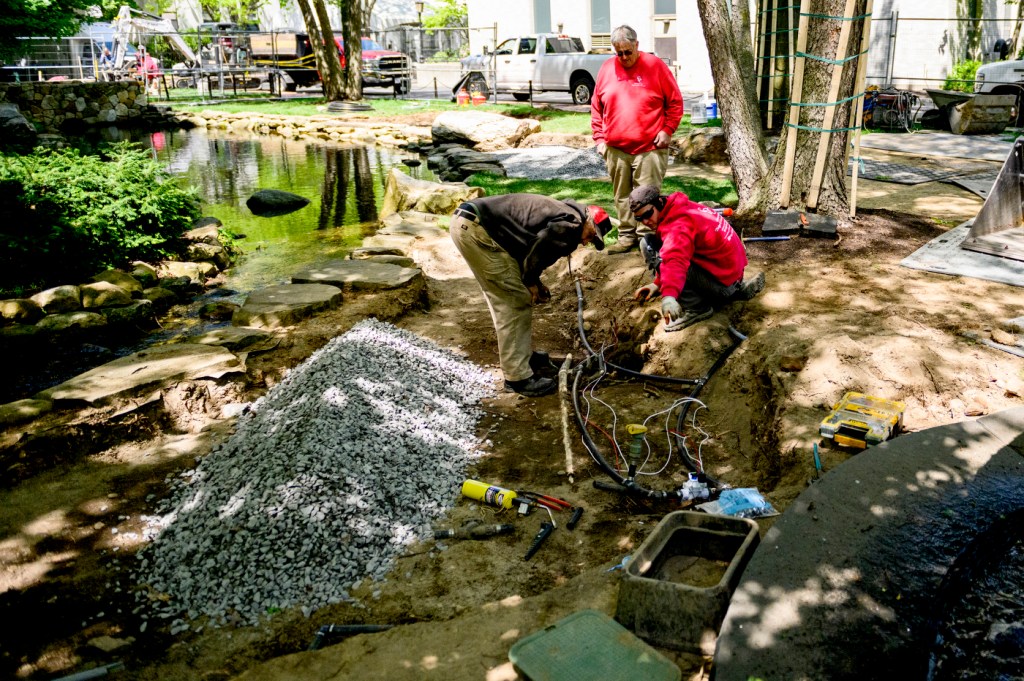
As one of Northeastern University’s most popular spots, the koi pond behind Curry Student Center on the Boston campus gets a lot of love.
Now it’s also getting some added attention, as a landscaping project this summer makes the feature more resilient and sustainable.
“When green spaces get used a lot, they get loved to death,” Stephen Schneider, director of horticulture and grounds, says while standing outside the construction fence surrounding the pond this week. “This area gets lots of feet, lots of people, lots of compaction and lots of wear and tear.”
Last week, work began on a project to re-landscape the area surrounding the koi pond and take the spot from what Schneider describes as a “mini-golf-course feel” with pond, trees and perfectly manicured grass, and transform it into a more-resilient mix of hard surface, plantings and lawn.
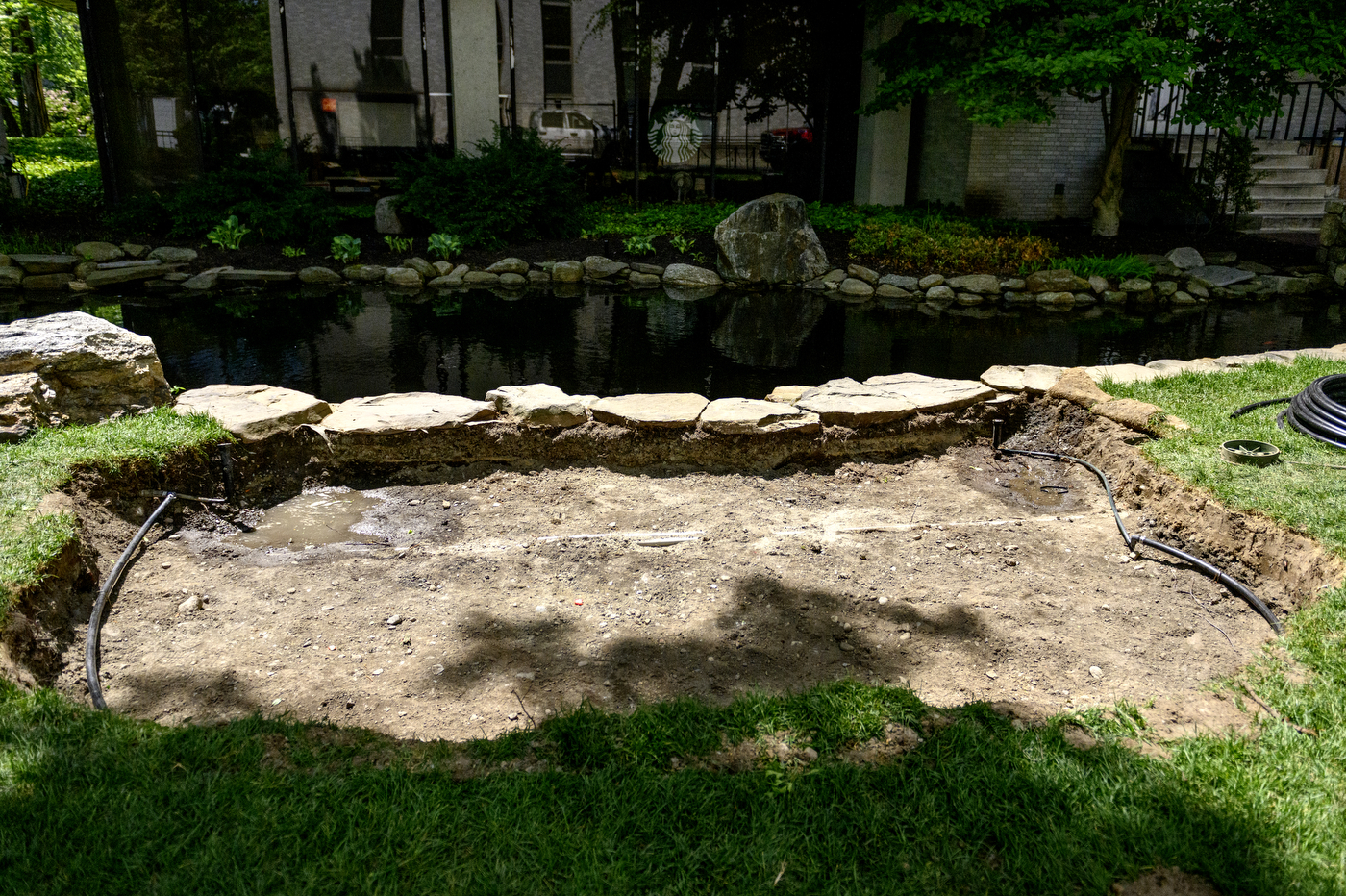
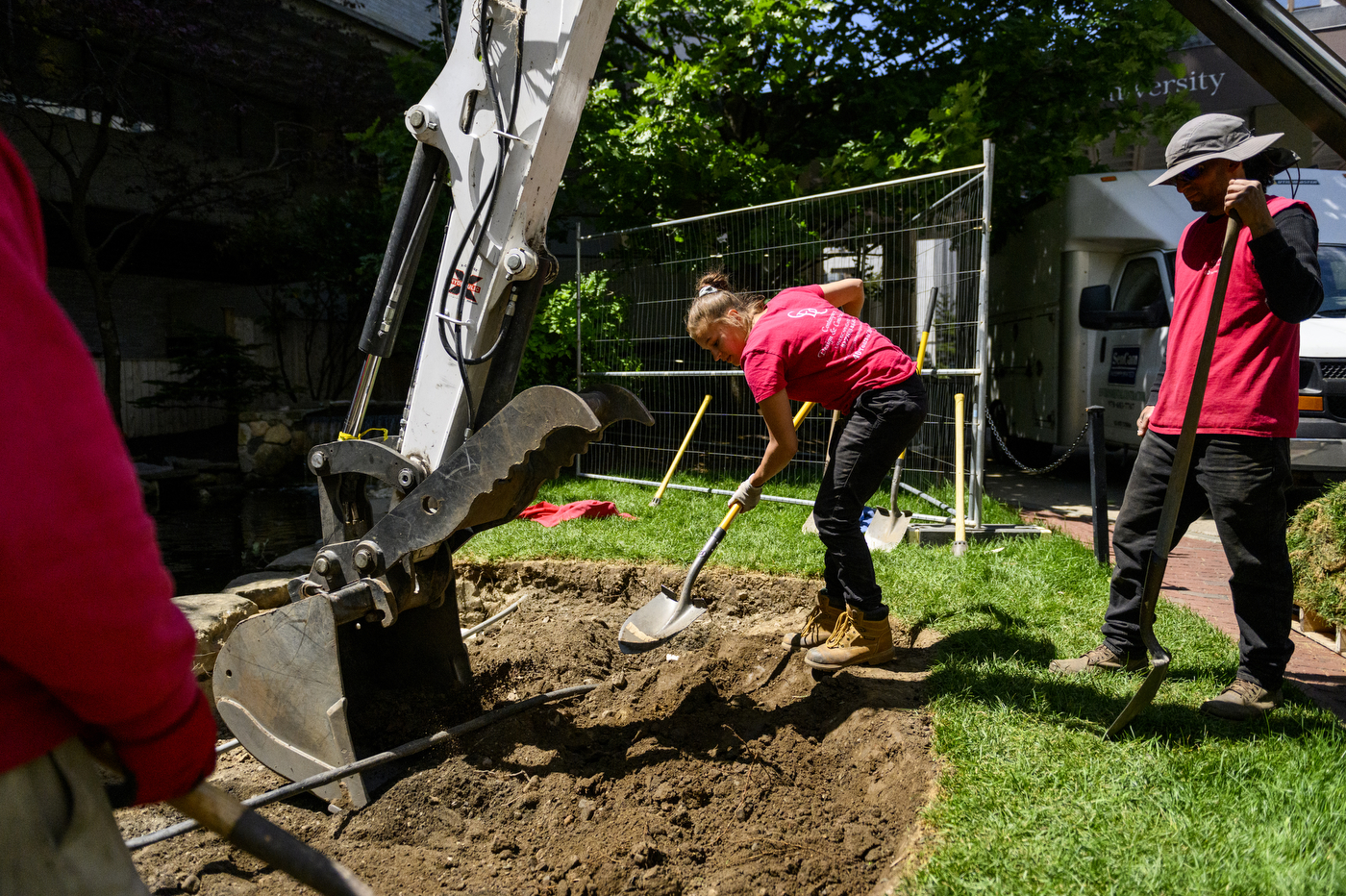
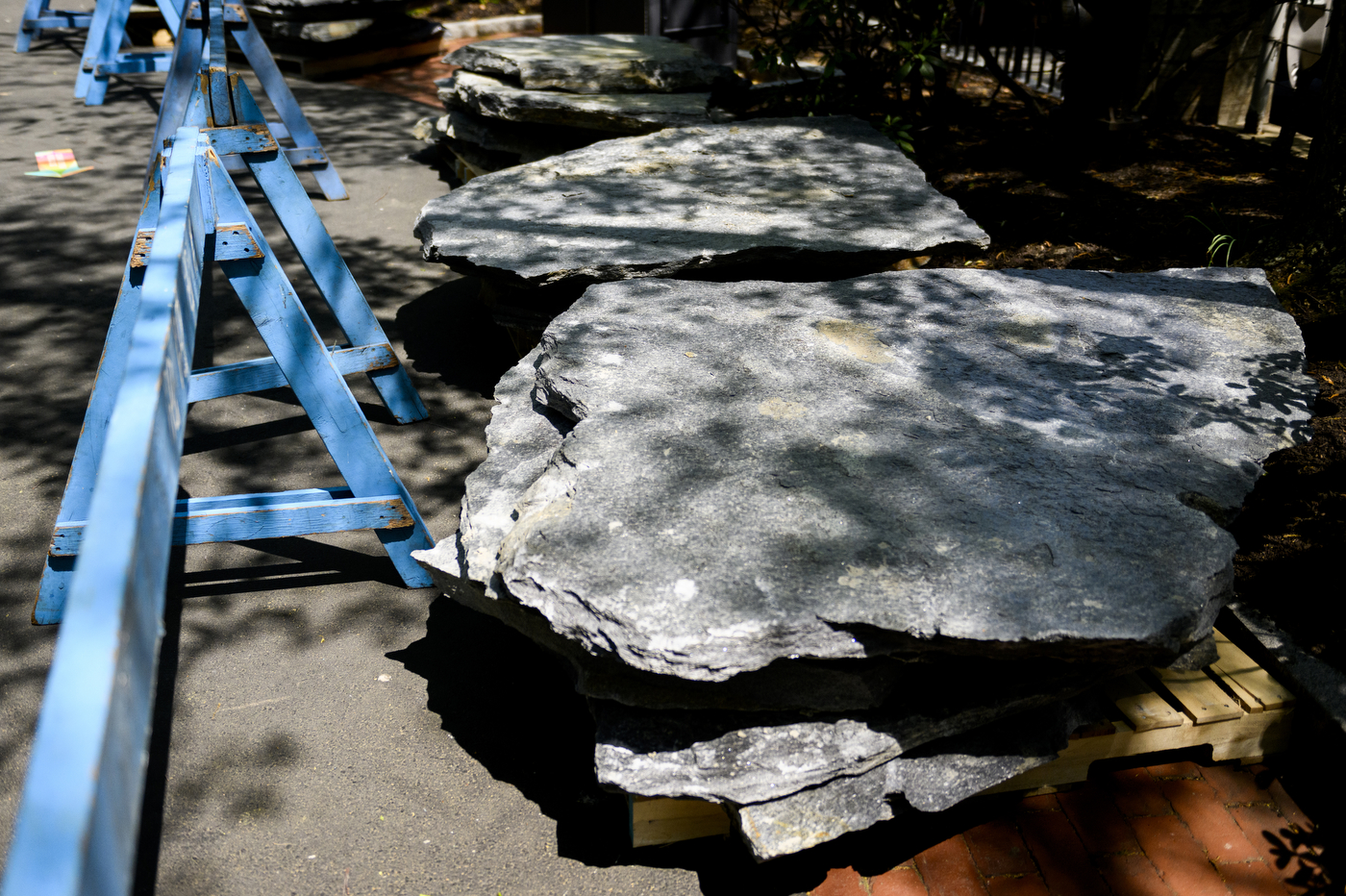
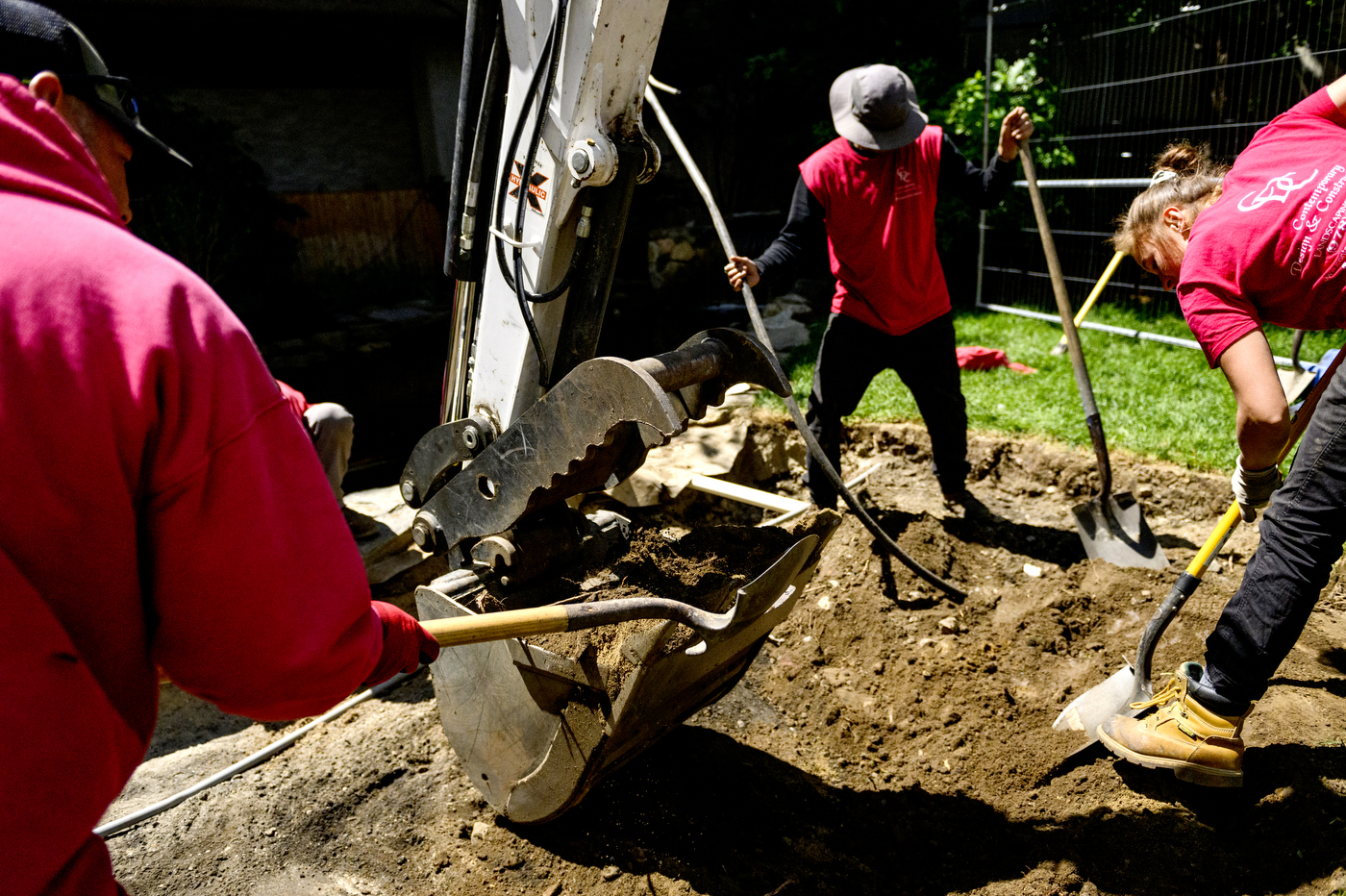
The project is the latest step in the evolution of the urban greenspace and arboretum, Schneider says, and focuses on improving the pond’s resilience and sustainability.
Because a pond on an urban campus has to withstand some stress.
Most notably, lots of foot traffic and the popularity of the Adirondack chairs at the pond, meant that the university was “rolling out the green carpet” as Schneider says, and replacing the grass sod three to four times a year.
“It’s an arduous task and, from the sustainability perspective, not enough on the green side,” Schneider says.
Heavy traffic also led to soil compaction, putting the roots of surrounding trees’ and plantings at risk.
The solution—devised along with landscape architect Charlie Page of the firm Mather & Page—is to add stone slabs in the places where people most like to sit, add low herbaceous plantings to separate the space into “individual rooms,” and keep a little bit of grass.
The stone slabs are Goshen Stone from a quarry in the western part of Massachusetts. There will be no concrete or mortar holding the slabs together, which is helpful to withstand the freeze-thaw cycle of New England winters.
“It’s absolutely gorgeous,” Schneider says of the stone. Moreover, it can “take some wear and tear.”
Of course, with this being Northeastern, there is also an educational component.
Schneider said the plantings would represent some of the most ancient species of plants, including lotus and waterlilies on the pond and mosses and horsetail—which looks like bamboo and grew to 30 feet tall when dinosaurs roamed the planet—along the banks.
“There are cool stories that can be told of ancient plants typically not in the landscape,” Schneider says. “It’s an opportunity to introduce interesting plants with a little interpretation so people can be interested at the same time as they’re relaxing.”
And yes, the koi “will be fine,” according to Madison Rosen, a rising third-year student working at the campus Arboretum for a co-op.
“What’s more detrimental is all the people that feed them and the dogs that chase them,” Schneider adds. (As a set of fun facts for the curious, Schneider notes that the fish are not fed fish food but subsist on algae; the fish do not have names; and he asked that people please not release goldfish and other pet fish into the pond at the end of the semester.)
Schneider predicted that the project will be completed by mid-June.
“You come here and it seems like everything is rumbling and exploding around them,” Schneider says as a train barrels past. “But you step into the space, and it all disappears.”
Cyrus Moulton is a Northeastern Global News reporter. Email him at c.moulton@northeastern.edu. Follow him on Twitter@MoultonCyrus.





